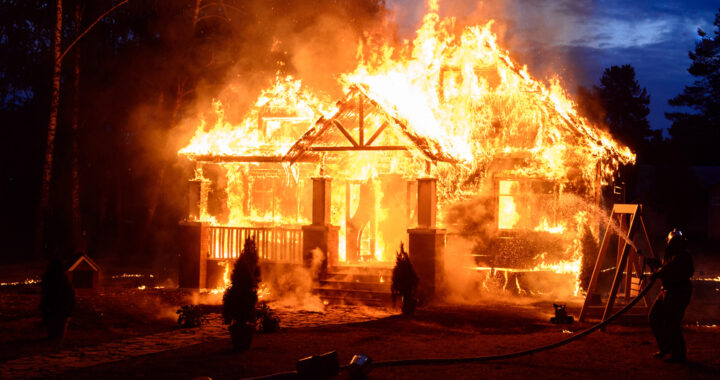Your commercial general liability (CGL) policy may contain a specified or designated operations endorsement. This does not operate as an exclusion but as a LIMITATION of coverage. The endorsement may provide that bodily injury or property damage ONLY applies to the operations or business described therein. Similarly, there may be a limitation of coverage for designated classifications or codes which has the same effect—limiting coverage to the classifications/codes listed therein. This is an important consideration, and you need to understand and watch out for such limitations of coverage. (These aren’t the only ones, but it’s important to appreciate that limitations of coverage operate to limit the coverage to which the CGL policy applies.)
The Eleventh Circuit Court of Appeal dealt with this exact issue under Alabama law (although the same analysis would apply in numerous jurisdictions). In this case, a landscaper (the insured) had a CGL policy with a specified operations endorsement that limited coverage to landscaping operations. The landscaper was hired to install an in-ground trampoline in addition to site and landscaping operations at a house. A person got hurt using the trampoline and the landscaper was sued. The CGL insurer denied coverage outright (and, thus, any duty to defend) because the complaint asserted that the injury occurred from the landscaper’s assembly and installation of the trampoline, which was not a landscaping operation. Furthermore, the Eleventh Circuit noted that the landscaper’s insurance application specified that the landscaper did not perform any recreational or playground equipment erection or construction, and the installation and assembly of a trampoline would constitute recreational or playground equipment.
Here’s the Eleventh Circuit’s noteworthy discussion on this limitation of coverage:
While the distinction between limits to coverage and exclusions from coverage may be murky in some cases, the policy here makes clear that the Specified Operations provision is a limit — not an exclusion.
To begin with, the Policy’s “Schedule of Forms and Endorsements” describes 27 different “exclusions” — and “Specified Operations” is not one of them. “Specified Operations” is instead described as a “Limitation of Coverage.”
But we need not rest on the policy’s description of the Specified Operations provision, because the operation of the policy confirms its status. Commercial general liability policies generally “give[ ] coverage through the general coverage provision, and ‘take[ ] away‘ coverage through the various exclusions.” Recall, the general coverage provision provides that
[United] will pay those sums that the insured becomes legally obligated to pay as damages because of “bodily injury” or “property damage” to which this insurance applies. [United] will have the right and duty to defend the insured against any “suit” seeking those damages. However, [United] will have no duty to defend the insured against any “suit” seeking damages for “bodily injury” or “property damage” to which this insurance does not apply.
By those terms, the policy sets out an (albeit not-totally-fleshed-out) limit to coverage. However, this initial explanation does not provide the full scope of coverage because it very broadly tells us only that the insurer will pay damages “to which this insurance applies” but not for any suit “to which this insurance does not apply.” From there, the Specified Operations provision fills in the details by adding, to that same section, the following:
-
-
-
- This insurance applies to “bodily injury” and “property damage” only if:
-
-
(4) The “bodily injury” or “property damage” arises from one or more of the operations shown above; and [i]f also scheduled above[.]”
What “operations are shown” and “scheduled above”? The policy states simply that “[the] Insured performs landscaping.” In short, the Specified Operations provision (fitting into the gap left by the general coverage provision) describes the contours or boundaries of coverage — it does not purport to take away coverage already granted.
Thus, the Specified Operations provision is a limitation of coverage — not an exclusion….
***
The parties expend significant energy parsing the words of the policy, including whether the site work necessary to install the trampoline was “landscaping” and whether the trampoline injury “arises from” that work. We conclude we need not resolve those issues here. Even taking the term “landscaping” as ambiguous, construing it in [landscaper’s] favor, and applying Alabama law’s broad understanding of the causal term “arises out of,” Snell’s claim still fails. As the district court explained, under Alabama law, “[e]very insurance contract shall be construed . . . as . . . modified by any . . . application which is a part of the policy.” And the district court’s analysis of [landscaper’s] application under that statute was correct:
[Landscaper] was asked in the application whether his work included “any recreational or playground equipment construction or erection” and Snell answered “No.” It is undisputed that the trampoline is “recreational equipment.” If [landscaper] had answered “Yes” to that question or if he had informed United Specialty at some time later that his operations were going to include structural work for recreational equipment and the installation of recreational equipment, then United Specialty could have added that coverage and made any appropriate adjustments to [landscaper’s] rate.
Accordingly, the information [landscaper] provided in his insurance application conclusively shows he is not entitled to coverage.
***
Taking the application as part of the policy itself, we agree with the district court that [landscaper] expressly disclaimed doing any of the sort of work he did here — including the site work necessary to install the trampoline that he now claims is “landscaping” out of which the underlying injury “arises.”
In sum, the district court correctly held that [landscaper’s] insurance application — which Alabama law requires us to consider part of the policy — expressly disclaims the work he did here. Accordingly, we affirm the grant of summary judgment on [landscaper’s] duty-to-defend claim against United.
Snell v. United Specialty Ins. Co., 30 Fla.L.Weekly C1008a (11th Cir. 2024) (internal citations omitted).
Please contact David Adelstein at dadelstein@gmail.com or (954) 361-4720 if you have questions or would like more information regarding this article. You can follow David Adelstein on Twitter @DavidAdelstein1.




 There is an affirmative claim known as promissory estoppel. (Whereas equitable estoppel is used an affirmative defense, promissory estoppel is used as an affirmative claim.)
There is an affirmative claim known as promissory estoppel. (Whereas equitable estoppel is used an affirmative defense, promissory estoppel is used as an affirmative claim.)


 When there is a
When there is a  In an insurance coverage dispute, it is common for the insured or the insurer to file a lawsuit that includes a claim for
In an insurance coverage dispute, it is common for the insured or the insurer to file a lawsuit that includes a claim for